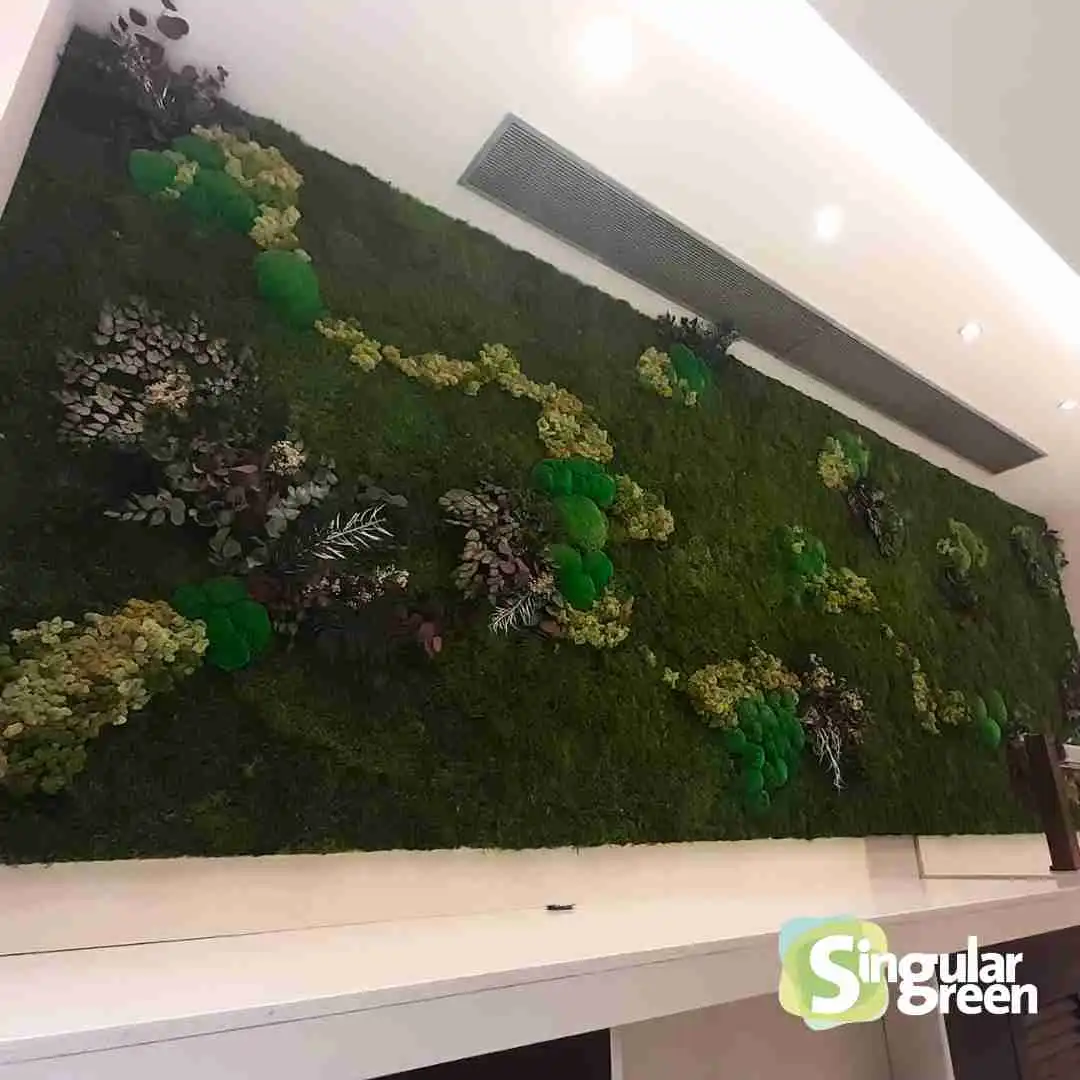When we talk about bio-pools, we are not only referring to natural and sustainable spaces, but also to finishes that not only respect the environment, but also provide durability and impeccable aesthetics.
The materials we choose to cover a natural pool must meet certain key requirements: they must be non-porous, resist algae growth and maintain their colour and shape over time.
In this article, we will explore the best finishes for bio-pools, based on my experience in the sector.
What are finishes for bio-pools?
The finishes in abio-pool play a crucial role not only for aesthetics, but also for maintenance. Unlike a conventional pool, the materials you choose must ensure a natural balance and prevent algae build-up, keeping the pool as clean as possible, so try to avoid materials that provide phosphorus.
On the market, there are a variety of options to choose from, such as gresite, porcelain stoneware, PVC, EPDM, and other types of waterproof sheeting.
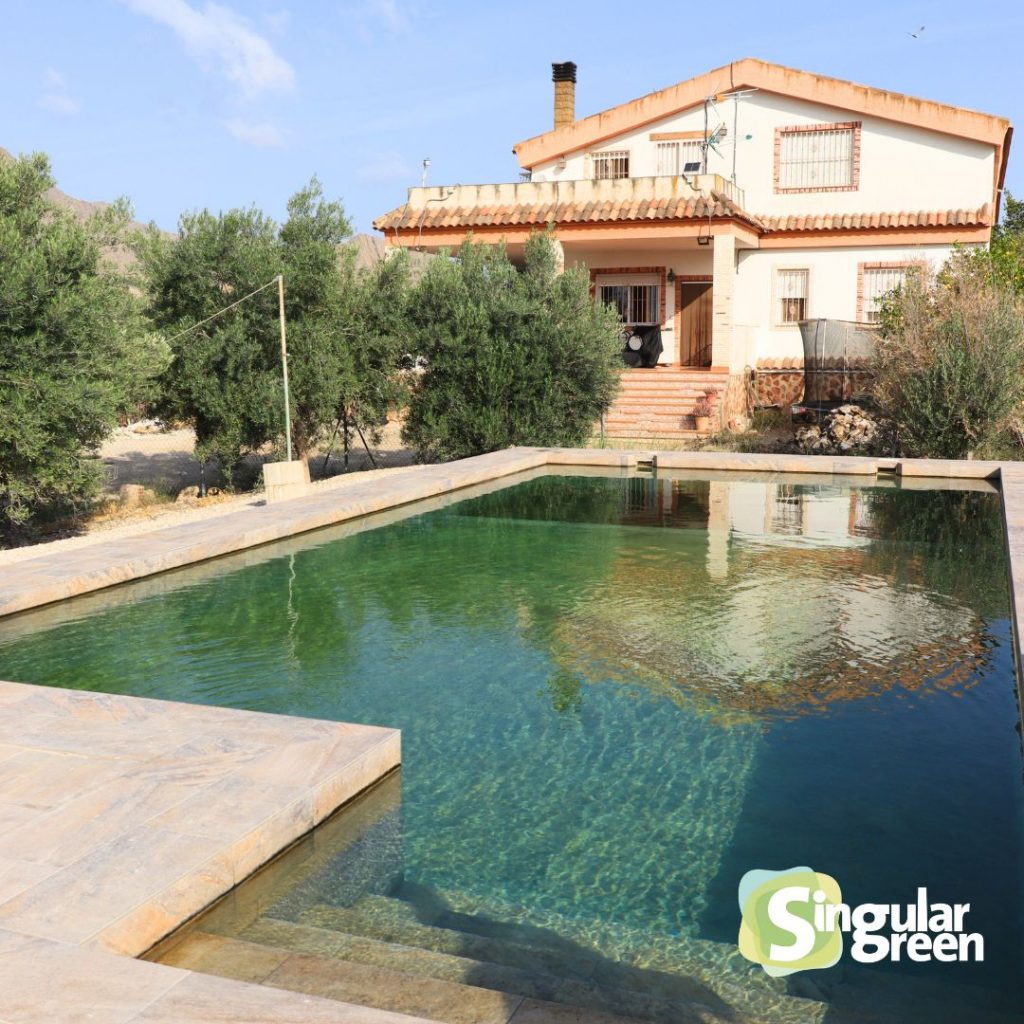
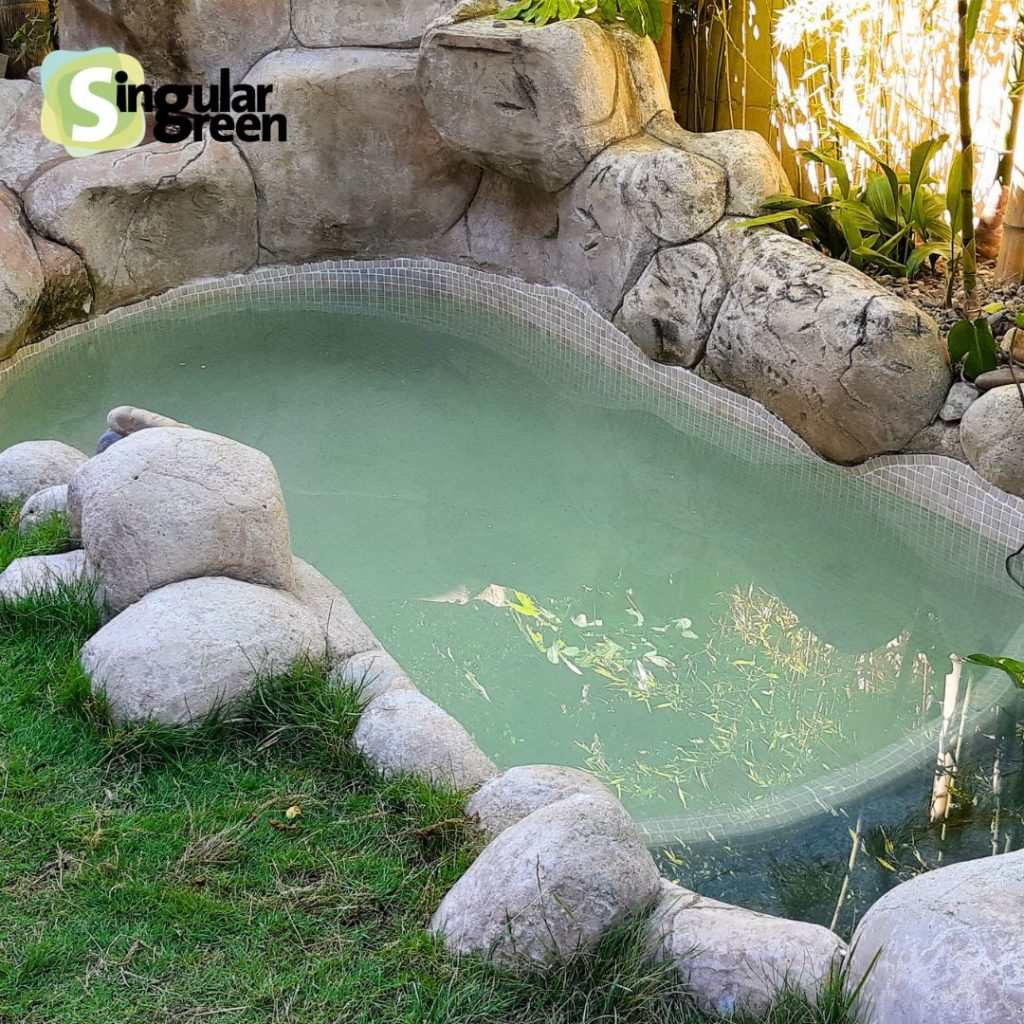
Gresite: The star liner for bio-pools
One of the most popular materials for bio-pools is gresite, a non-porous glass mosaic. This type of liner has several advantages:
‘Gresite is made of glass mosaic, which means that it is not porous at all.
Thanks to this feature, a tiled pool will be perfectly clean and virtually self-cleaning, eliminating the need for intensive maintenance.’
Gresite easily adapts to the curved shapes of the pool, making it an ideal choice for more organic and customised designs.
In addition, there is a wide variety of colours available, allowing you to personalise your natural pool and minimise the perception of dirt.
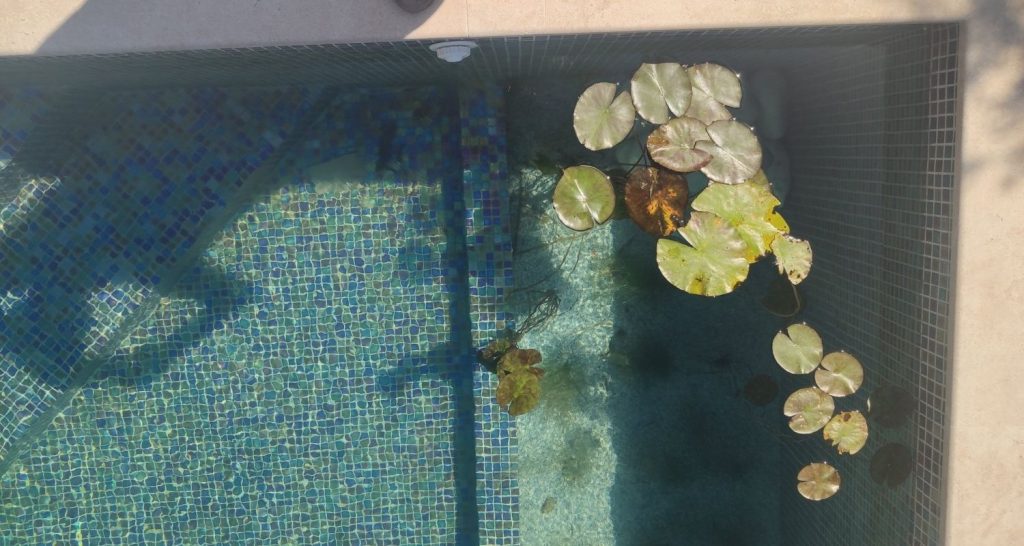
Why is gresite ideal for natural pools?
One of the main benefits of stoneware is that it is easy to clean.
As it is non-porous, it prevents algae from adhering easily, keeping the water clearer for longer. In addition, its strength and durability make it a long-term investment.
‘If you choose darker colours, such as blue or green, you can further minimise the perception of dirt, allowing you to enjoy your pool longer without having to constantly clean it.’
Porcelain tile: advantages and disadvantages in natural pools
Porcelain tile is another popular choice, mainly because of its versatility in finishes. Unlike gresite, porcelain stoneware is available in larger pieces with fewer visible joints, which can give a more uniform look to the pool.
‘Porcelain tile is ideal if you are looking for a smooth, glossy finish that makes cleaning easier and minimises algae growth.
However, because the pieces are larger, it is more difficult to install, especially in pools with curves or complex shapes.’
Despite its aesthetic appearance and the advantages it offers in terms of cleaning, it is more expensive due to its complicated installation, and it does not adapt well to non-straight shapes.
PVC and EPDM: Waterproof sheet alternatives
Within the waterproof sheet finishes, PVC and EPDM are two of the most commonly used materials for natural pools.
PVC, in particular, is easy to install and offers a variety of aesthetic finishes. However, it is important to bear in mind that:
‘PVC over time migrates, i.e. it loses its plasticisers and becomes more rigid.
This affects durability, so even though it may last 10 to 25 years, there will come a time when you will need to replace it.’
EPDM is another option, especially popular in bioswimming pool finishes, but is usually only available in black or white.
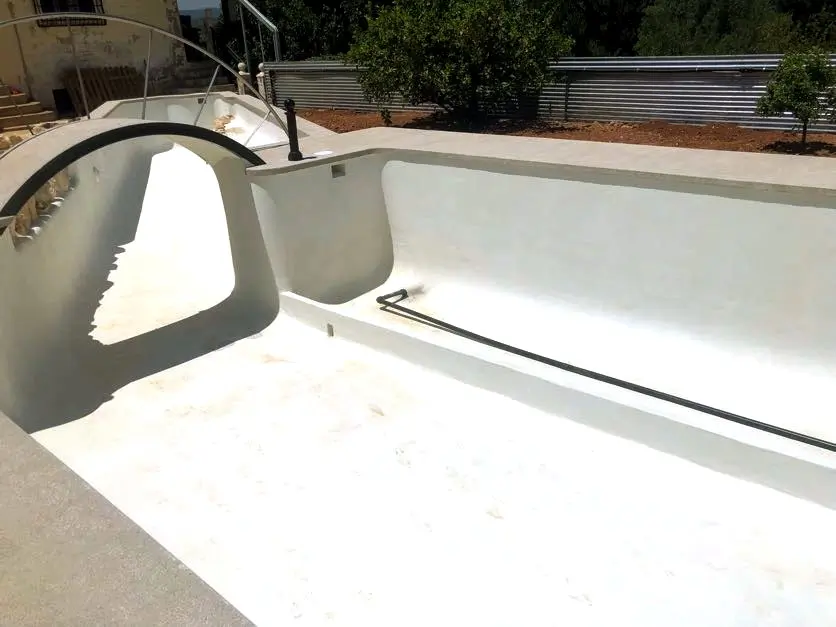
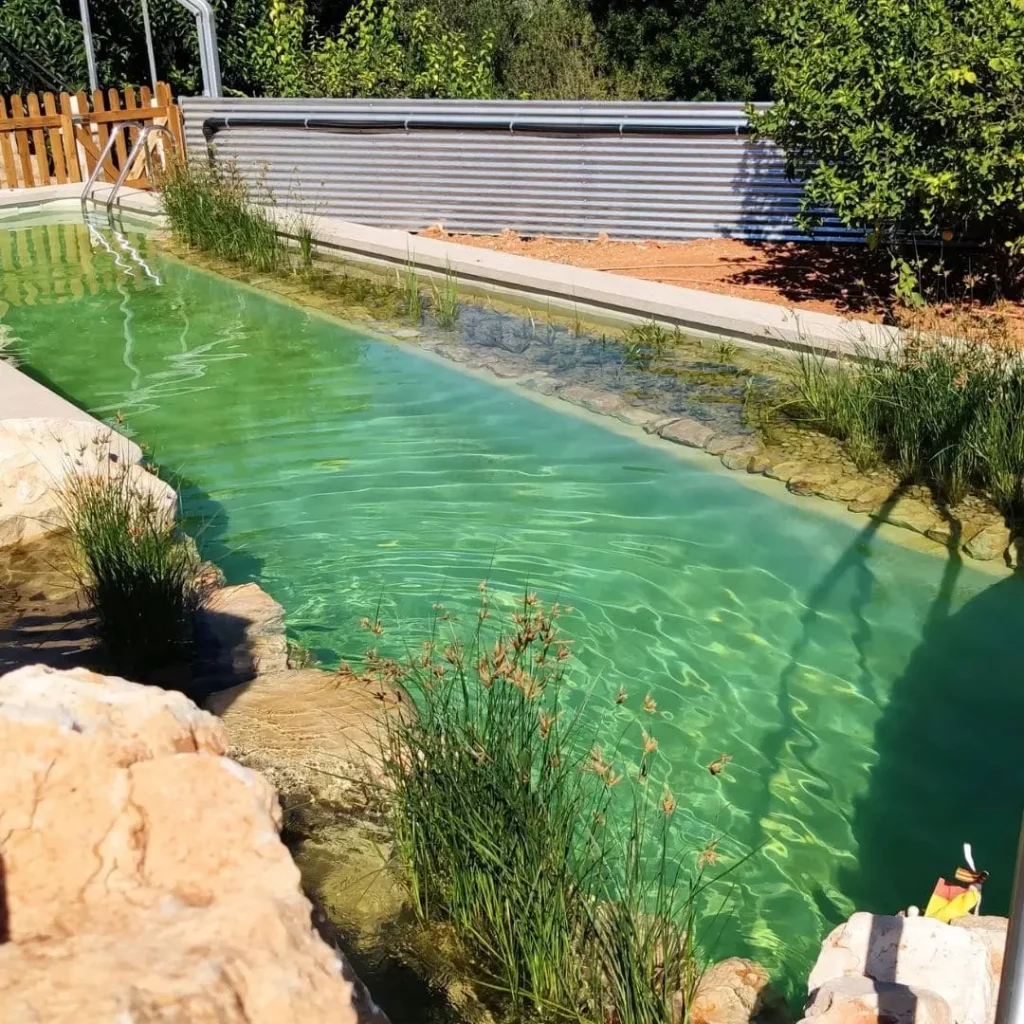
If colour is not your priority, this may be a more durable and environmentally friendly option.
Is it advisable to use PVC in swimming pools?
The use of PVC in bioswimming pools is somewhat controversial.
While it is easy to install and relatively inexpensive, it has a limited lifespan and can become brittle over time.
If you decide to use it, make sure you choose smooth PVC, as stone imitations or rough finishes encourage algae growth, which goes against the principle of a natural pool.
Eco-friendly materials for a sustainable pool
In the quest for sustainability, it is essential to choose environmentally friendly materials that do not interfere with the bio-pool ecosystem. Waterproof sheets must avoid chemicals that damage algae or plants responsible for water purification. This is where TPO (thermoplastic polyolefin) plays an important role:
‘Polyolefin sheets are environmentally compatible and specifically designed for bio-pools, making them an excellent choice for both durability and environmental friendliness.’
Maintenance and durability of bio-swimming pool finishes
The maintenance of a bio-pool depends largely on the type of finish you choose. Smooth finishes, such as gresite or porcelain stoneware, require less maintenance due to their resistance to algae growth.
On the other hand, materials such as PVC or EPDM may need more attention, especially as they age.
‘If you are looking for a pool with a long life span and low maintenance, my recommendation is to opt for gresite. I have installed it in several pools and the results have been excellent: it self-cleans well and maintains its appearance for a long time.’
Conclusion
Choosing the right finish for a bio-pool is key to ensuring not only aesthetics but also functionality and long-term sustainability.
Materials such as gresite and porcelain tile offer great advantages in terms of durability and ease of maintenance, while waterproof sheets such as EPDM and TPO are ideal for those looking for greener alternatives.
Always consider the intended use of the pool and the characteristics of the terrain to make the best choice.
If you have found this information useful, don’t hesitate to share it! And remember that, although maintenance is important, choosing the right material from the start can save you a lot of headaches in the future.






